The Easy Way To Paint Cane Bottom Chairs
As an Amazon Associate, I earn from qualifying purchases.
Hey Friends! I painted this cane bottom chair a couple of months ago, and I have a short, sweet tutorial for you today.
I really didn’t want to paint the chair. It had a lot of character, and the cane seat was in great condition. The etched or painted details on the back of the chair were present but worn or scratched off in places.
I cleaned the chair and waxed it, then took it to my booth at the antique shop. I priced it below $20, which I thought was very reasonable, but it sat in the booth for several months with no takers.
So I brought it home and painted it. We will see if it sells now.
Before painting the chair, I filled the holes on the sides with wood putty.
I think someone was trying to make the rungs on the legs more secure by nailing them in place, thus the big holes.
Once the wood filler dried, I sanded it flush with the wood, then started painting the chair with spray paint. That is my tip for painting a dining room chair. Spray paint the hard-to-paint areas before brushing on the latex paint.
Dining chairs have corners and edges, and places where the rungs or slats meet the frame, and it makes the paint job easier by spraying those areas first. I use paint that is similar in color to my latex paint choice.
In this instance, I planned to paint the chair an off white, so I used my favorite Rust-Oleum Satin Heirloom White to spray paint the cane bottom and the joint areas.
Cane is difficult to paint with a brush because it’s easy to end up with globs of paint in the woven areas of the cane if you do not use a light hand with the paint.
When brush painting, you need to load your paint brush with a small amount of paint, then layer the paint using thin coats, allowing each layer of paint to dry in between coats.
Spray paint is a great way to cover the cane completely because it will cover those tiny woven areas completely with just a couple of passes with the spray!
I had some really white paint on my shelf, and a container of tan paint I was gifted by my sister-in-law. She went through many paint samples when selecting paint for her living room, so I ended up with the unwanted paint samples. I LOVE free paint.
Anyway, I mixed the two paint colors together until I had an off-white paint color for my chair.
Then I started brush painting the chair. I really dislike painting dining chairs – too many details and small sections.
I brushed latex paint over the cane with a small paint brush loaded with just a little paint. I spray-painted the bottom side of the cane, but didn’t bother with painting over it with latex paint.
Brushing a bit of my off-white latex paint onto the cane ensures it will blend with the rest of the chair.
For me, spray painting first, then lightly brushing over the cane with the latex paint, is the easiest way to paint cane bottom chairs!
The painted chair looks nice, but the paint needed distressing. I couldn’t resist.
To distress the paint I started with a wet wipe…….
……and sandpaper, which I wrapped inside the wet wipe.
The wet wipe wrapped sand paper allowed me to distress the paint with no sanding mess and also showcase the original stained finish. Using sand paper only would have distressed the paint down to raw wood.
The white paint gives the chair a clean and fresh look, and the distressing gives it an aged finish.
I tried not to overdo the distressing.
I think the chair will sell now once I get it back to the booth. I think I will price it at $24.
I really like the cane painted! What do y’all think of the chair now?
Leave a note if you have time, and thanks for being here, Kathy

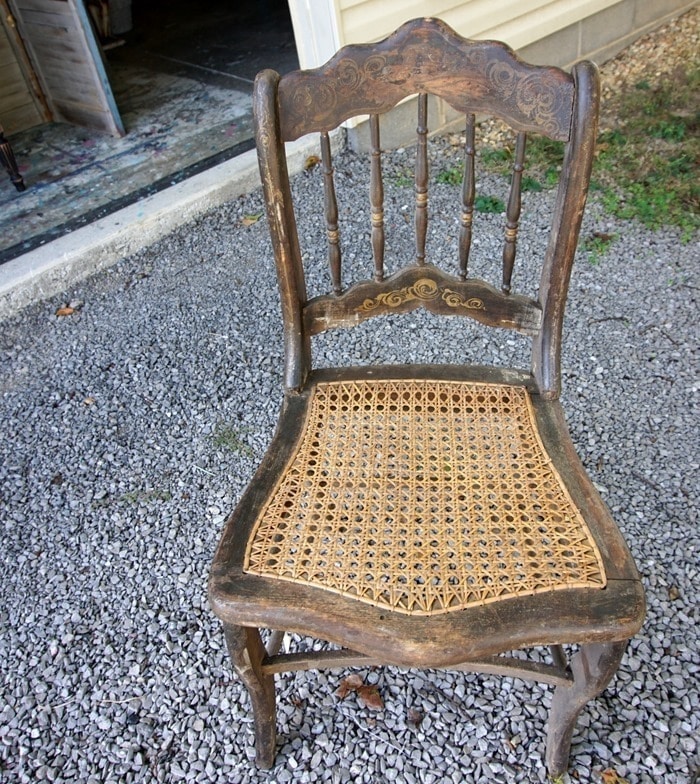
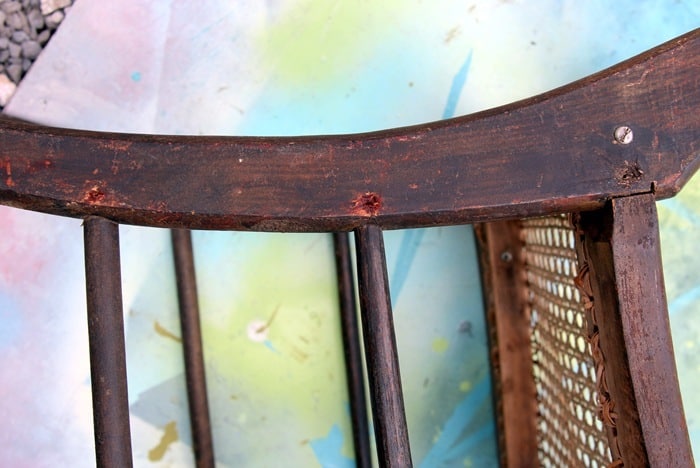
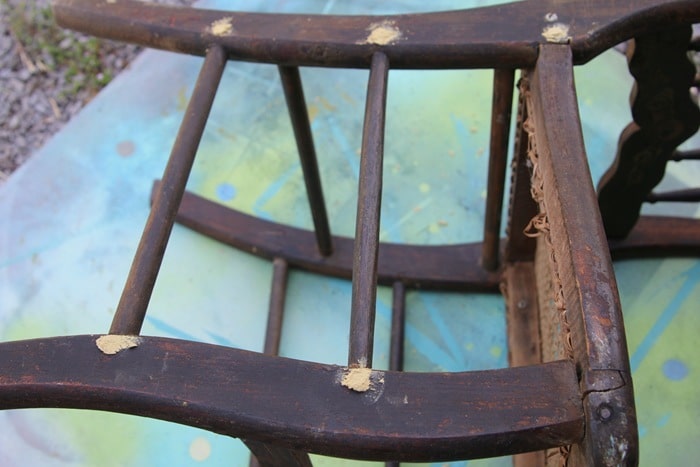
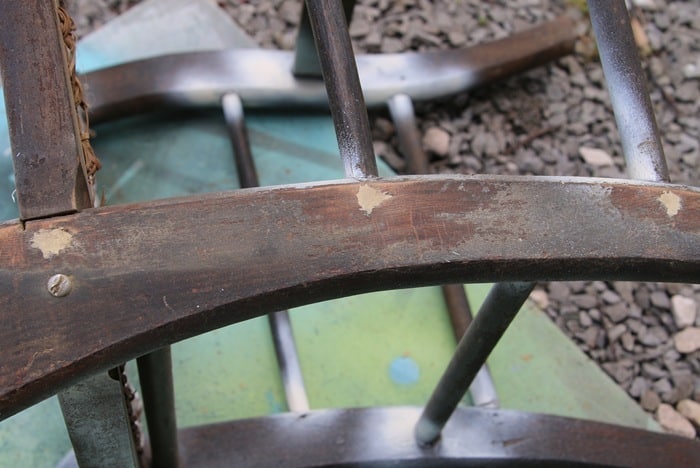
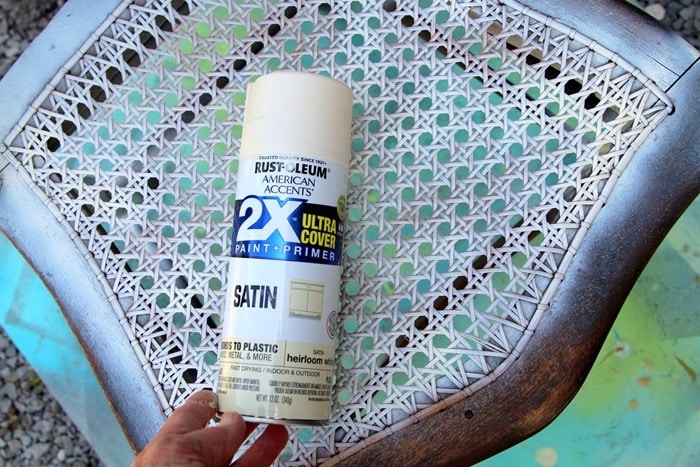
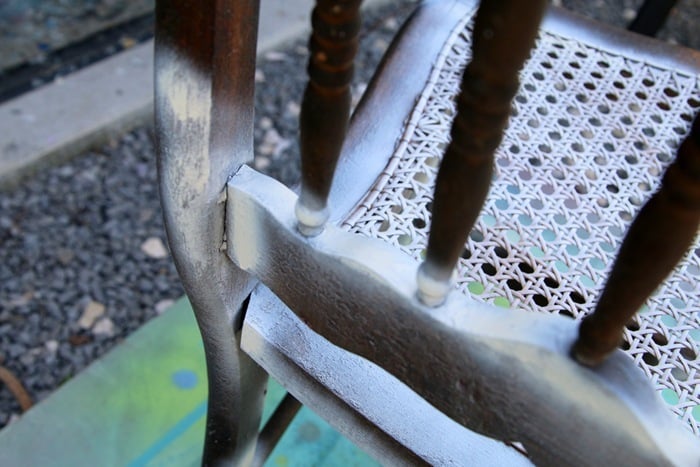
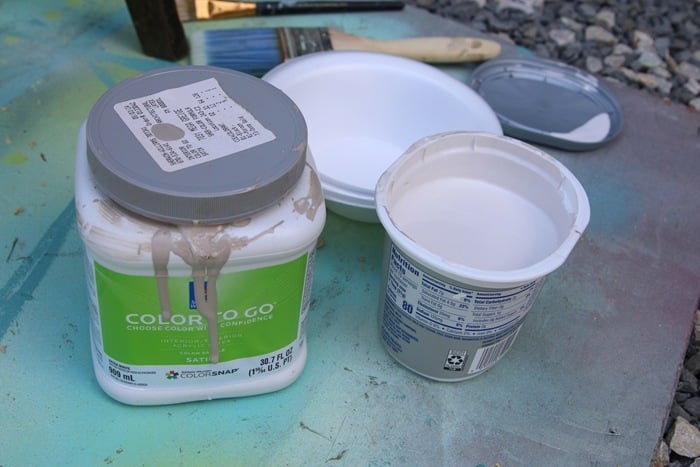
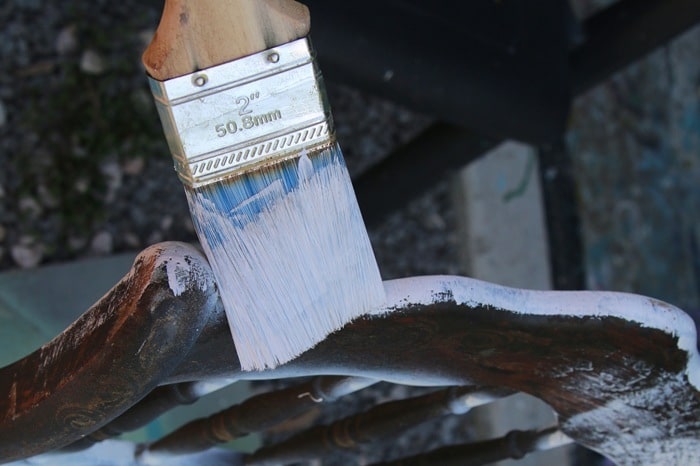
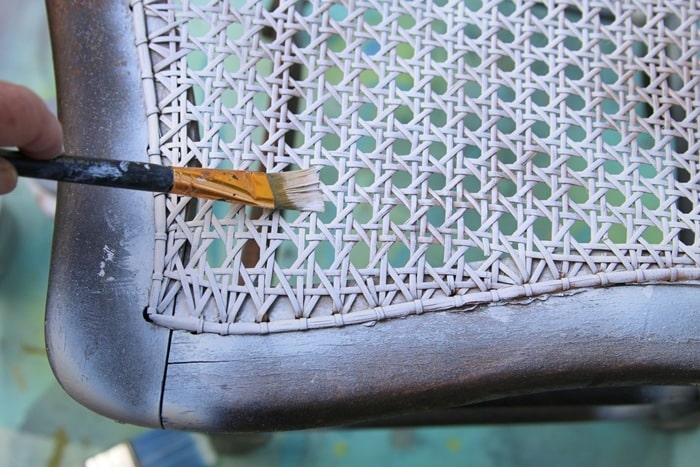
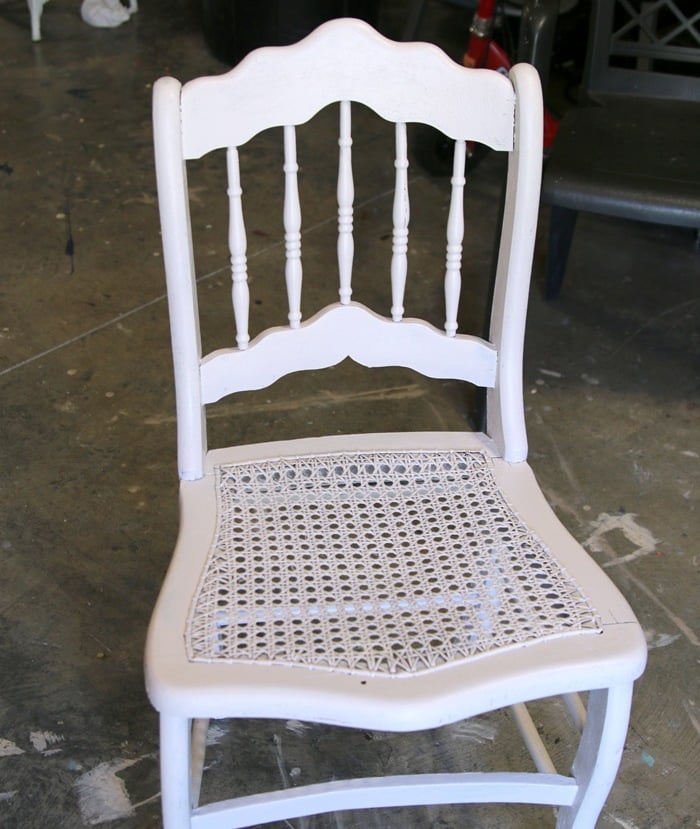
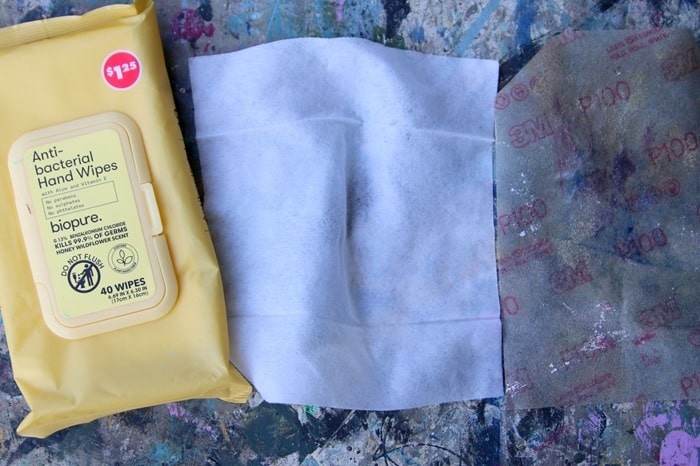
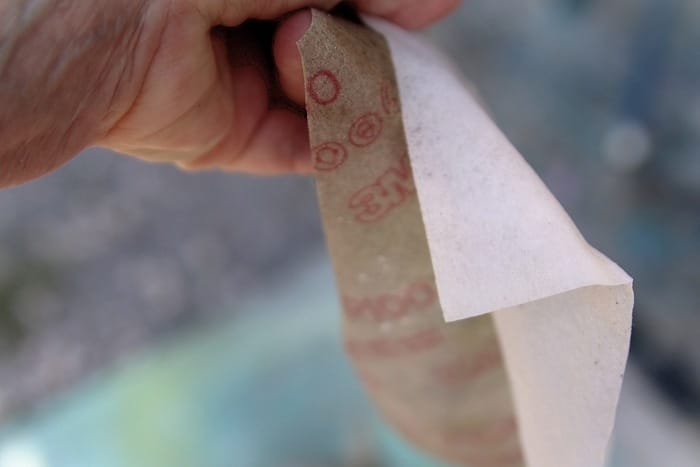
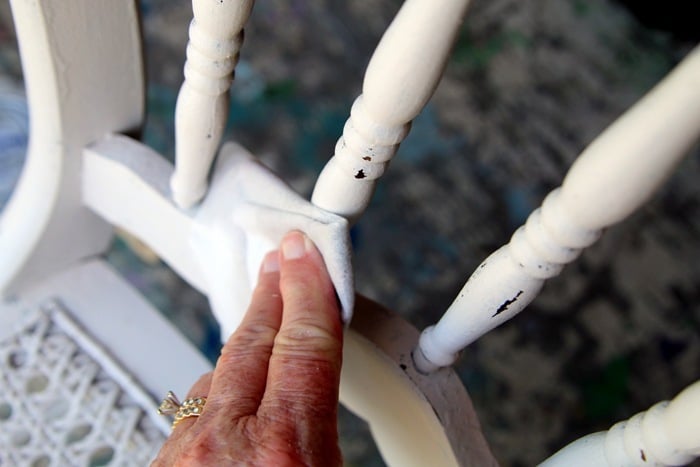
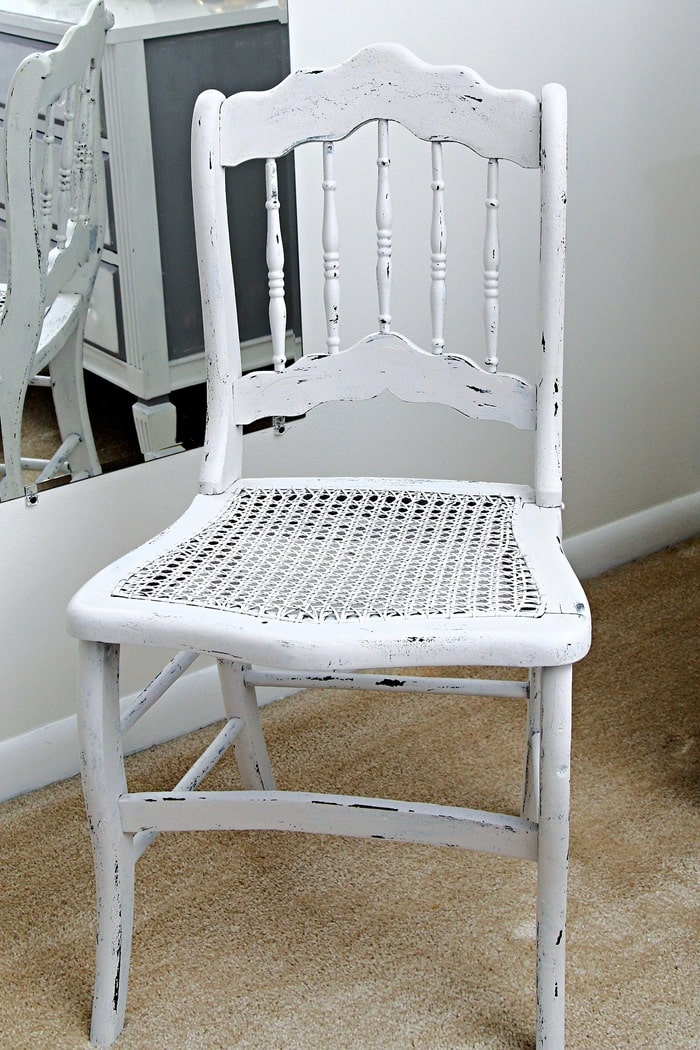
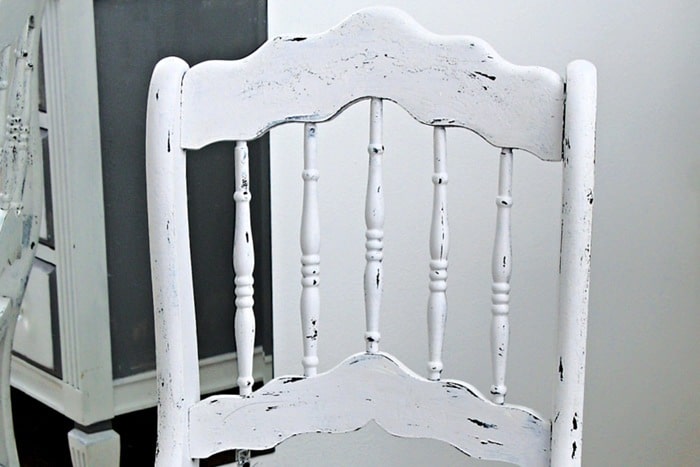
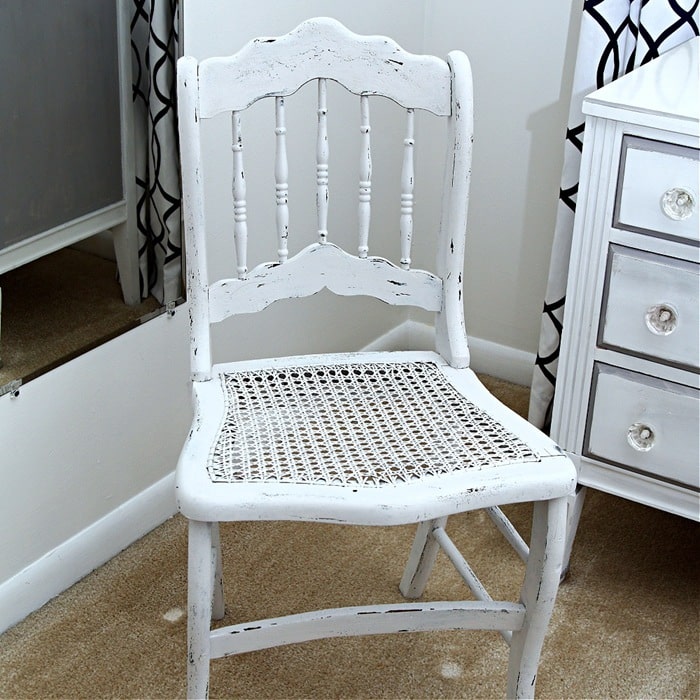
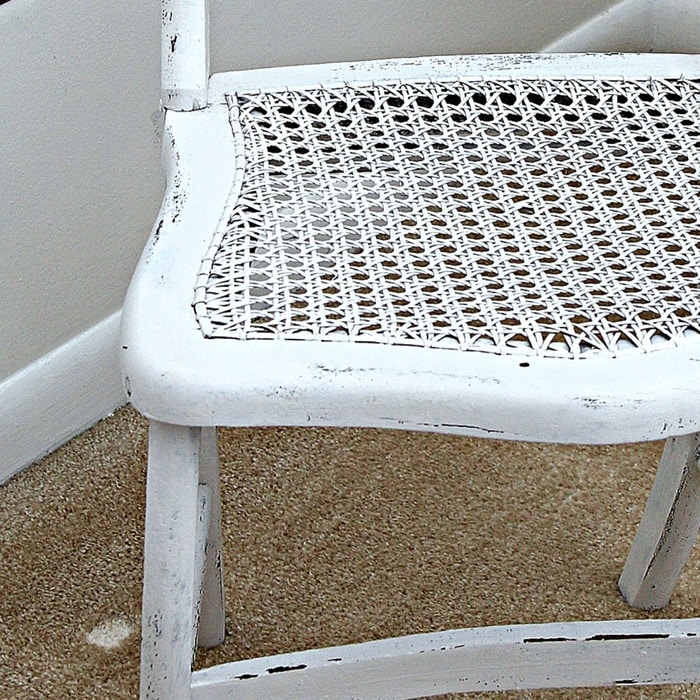
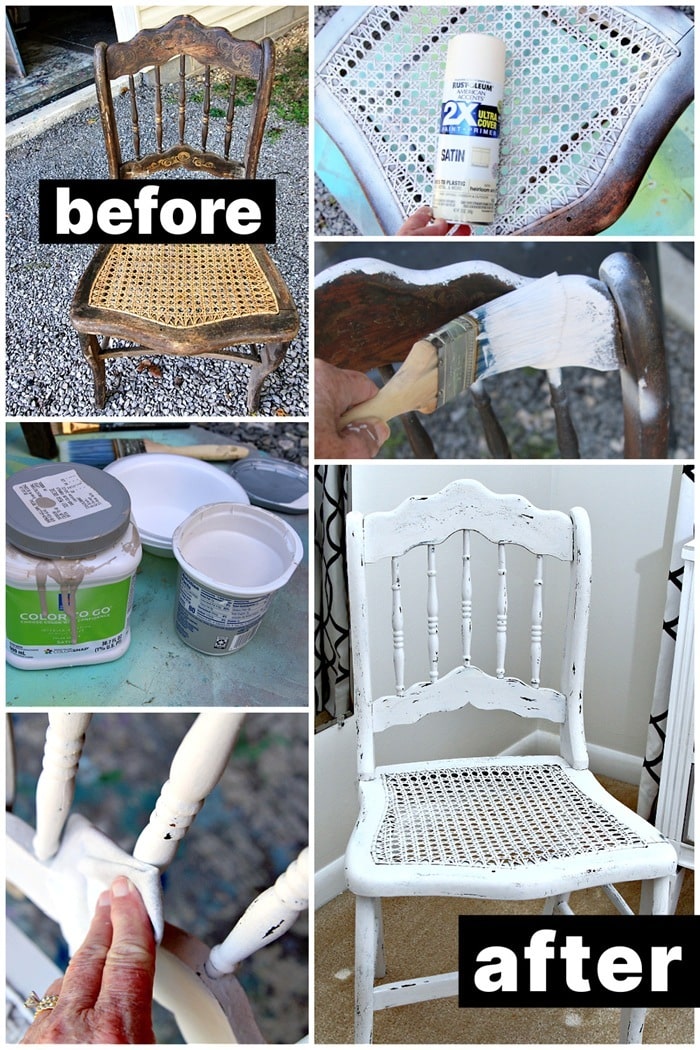
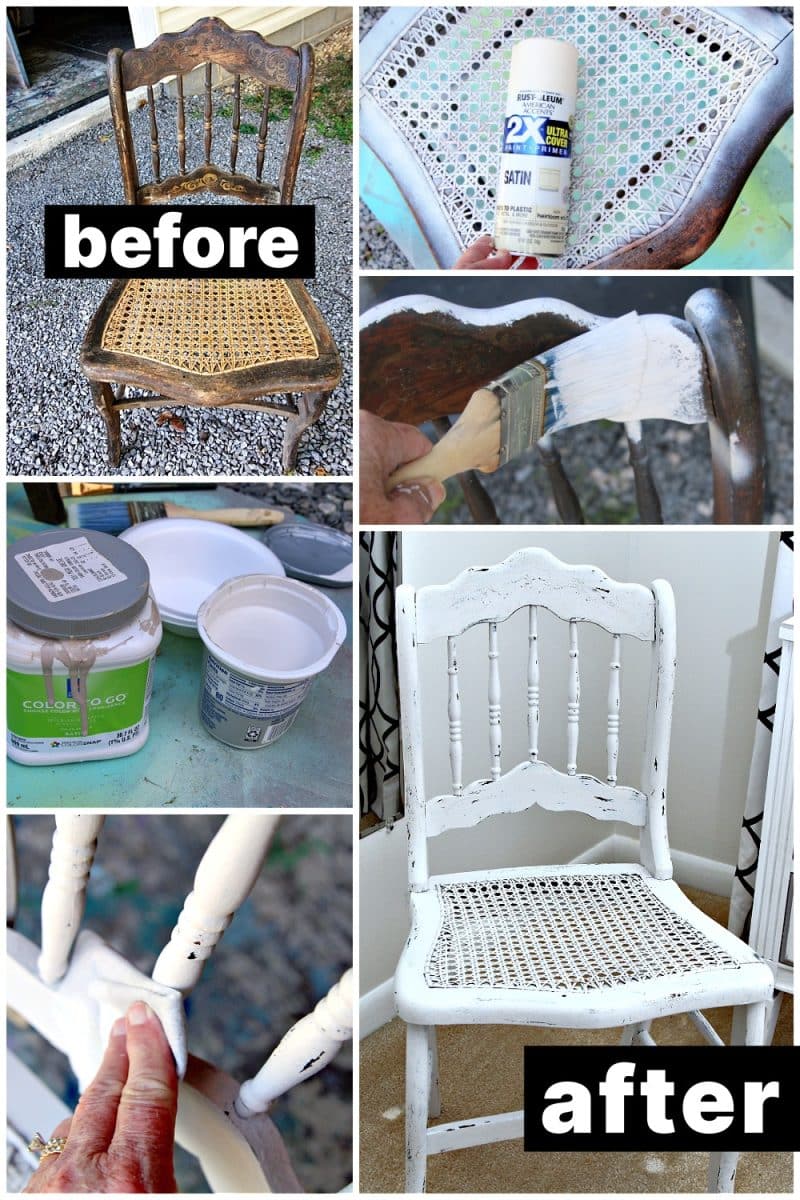
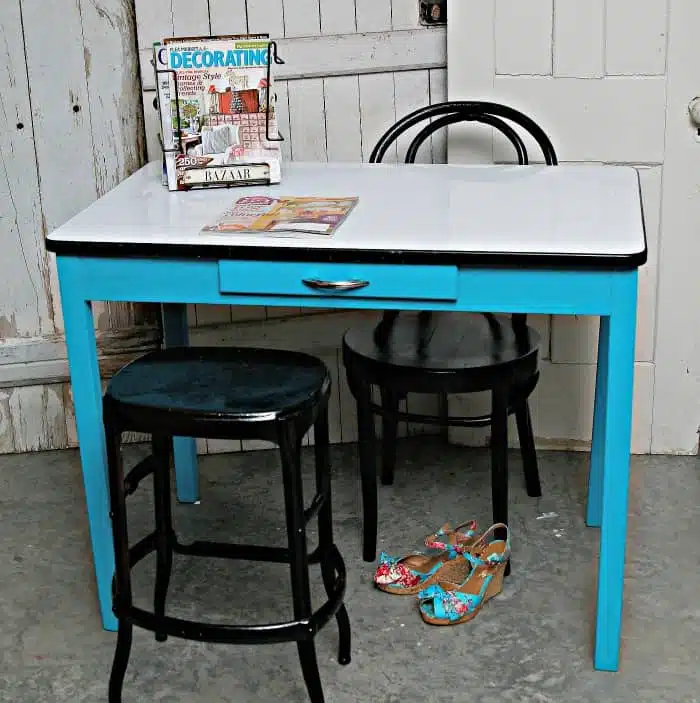
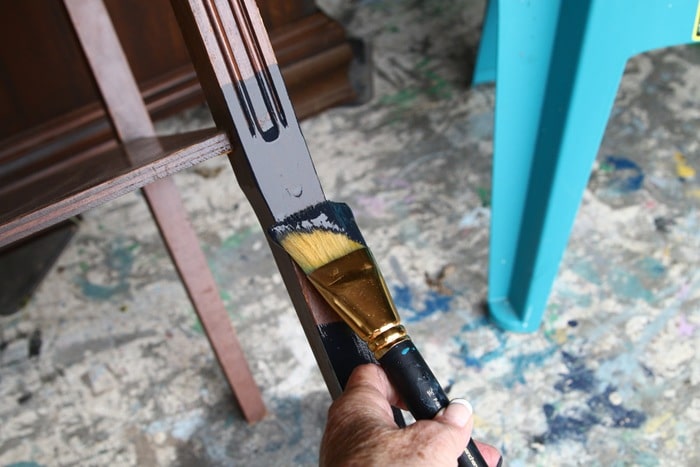
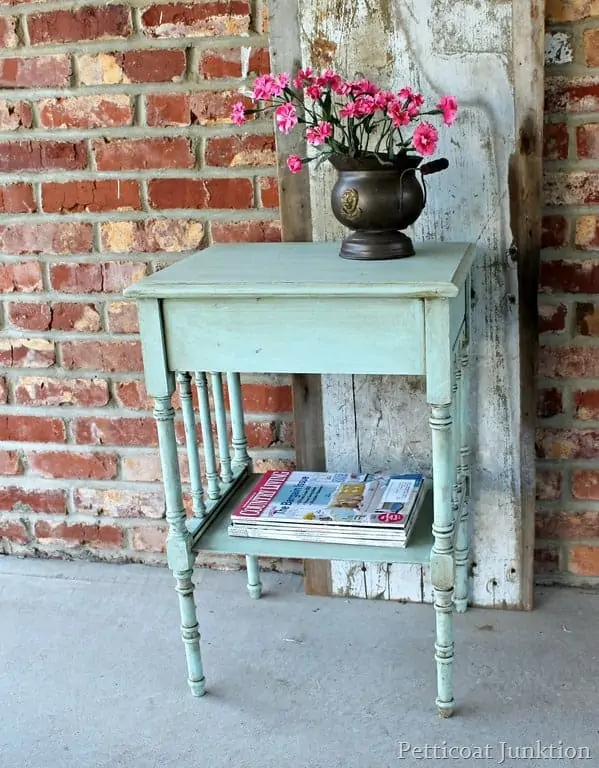

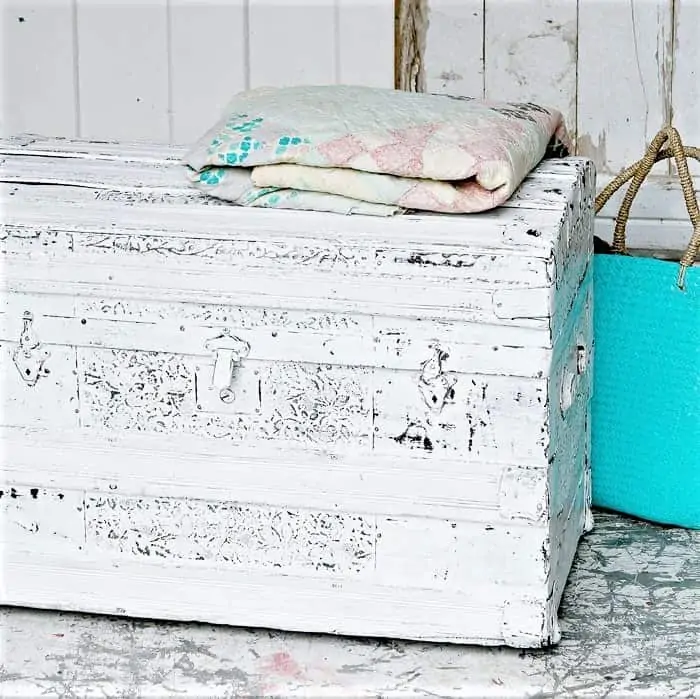
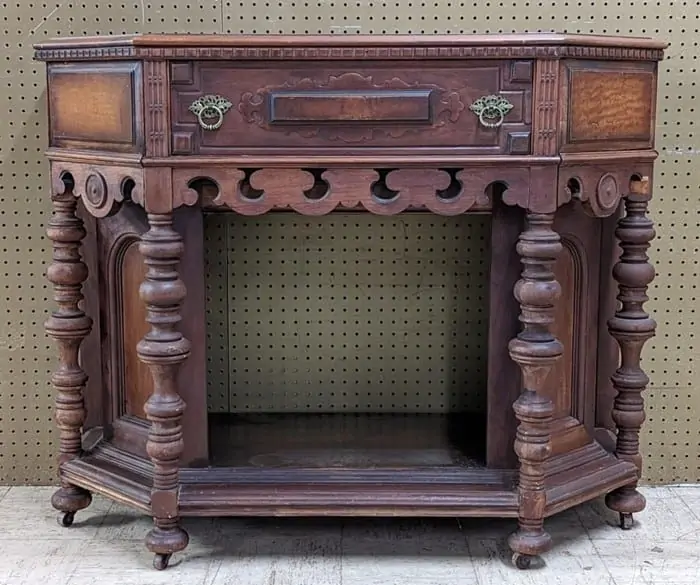
I think the chair looks great and the price is VERY reasonable!
Hello I am thrilled to have found your blogs. I am going into business for myself and always have loved resaleing old furniture now thanks to you I will know how to include the paint also to my pieces.keep up the good work! Thanks!